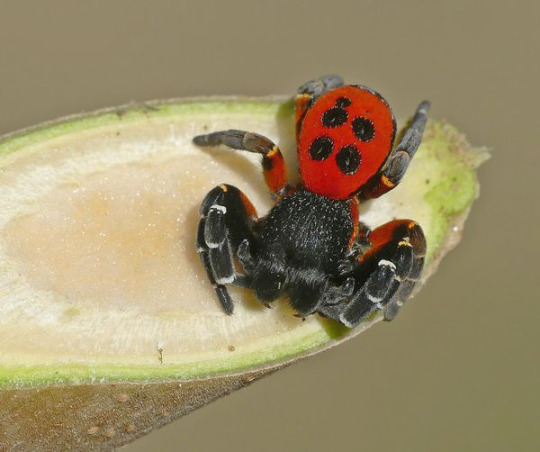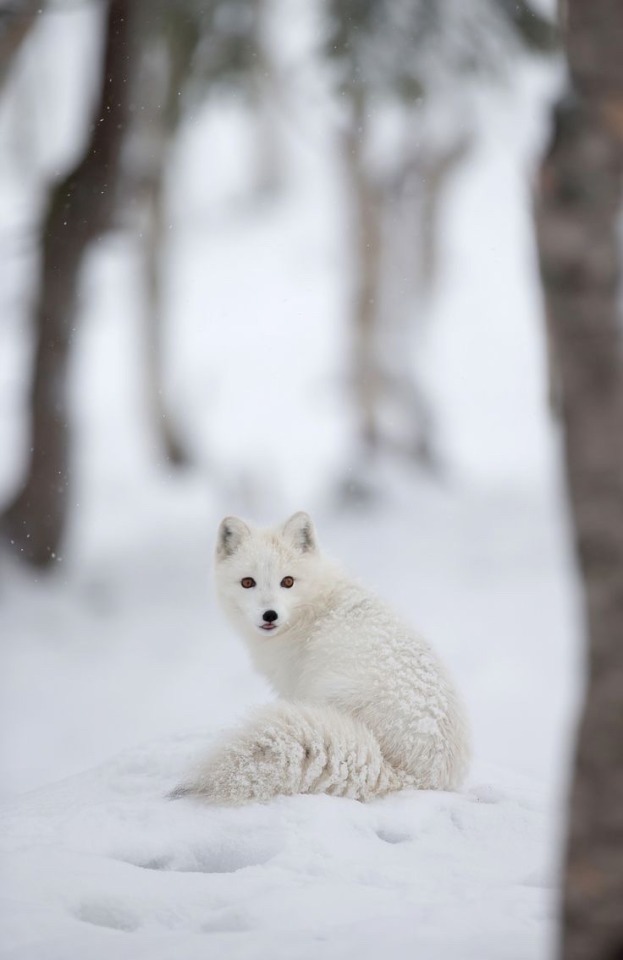A zoo themed blog | Online Zoo | appreciation and discussion of all animals, ran by an autistic teen with an animal special interest | Enjoy!
Don't wanna be here? Send us removal request.
Text

Panthera tigris! Or, the tiger.
Did you know, the tiger is 90 to 110 cm (35 to 43 in) in height at the shoulders.
Thank you for visiting the zoo! 🐾
#tiger#panthera tigris#animal#biology#fauna#flora#flora fauna#herps#nature#reptiblr#reptile#zoology#big cat#cats#cat
10 notes
·
View notes
Text

Archispirostreptus gigas! Or, the african giant.
Did you know, giant african millipedes can have up to 400 legs? They also live up to 10 years! Big commitment, right?, Would you own one of these fascinating creatures?
Thank you for visiting our zoo! 🐾
#Archispirostreptus gigas#online zoo#animal#giant african millipede#biology#fauna#flora#flora fauna#herps#nature#reptiblr#reptile#zoology#bug#bugs#zoo#millipede
26 notes
·
View notes
Text




Fox cubs! Photos taken by norichan5050.
Some fun facts about fox cubs . . .
• Fox babies are called many different names, including Pups, Kits, and Cubs!
• Fox cubs can even hear the tiny mouse squeak from 100 meters away.
• A group of foxes is called a skulk or leash.
• Sight, hearing, and sensing senses are well developed in fox cubs.
The specific fox subtype shown in the photos is the red fox otherwise known as Vulpes vulpes Linn. Red foxes belong to the family Canidae!
Thank you for visiting our zoo! 🐾
131 notes
·
View notes
Text

The Ladybird spider! Photo by Zoran Gavrilovic.
Some fun facts about this spider . . .
• Eresus sandaliatus, otherwise known as the ladybird spider, is a species of spider found primarily in northern and Central Europe. Like other species of the genus Eresus, it is commonly called ladybird spider because of the coloration of the male, they mimic the ladybird beetle (commonly known as the ladybug). The Ladybird Spider is sadly extremely endangered in the UK.
• Ladybird spiders live in burrows with silk trip-wires covered with dense fluffy threads that radiate outwards to catch their prey. These include including devil's coach horse and violet ground beetles!
• Females mature after 4-5 years, but may live a few years longer if not found by a male.
Thank you for visiting our Zoo! 🐾
#herps#animal#fauna#flora#flora fauna#reptile#zoology#reptiblr#nature#biology#spider#ladybird spider#lady bird#Eresus sandaliatus#Zoo
10 notes
·
View notes
Text

Photo found here . . .
The artic fox!
Fun facts about this fox..
• There are 8 recognised subspecies of the Arctic fox! Mainland Arctic fox Vulpes lagopus lagopusc, Iceland Arctic fox Vulpes lagopus fuliginosus, Greenland Arctic fox Vulpes lagopus groenlandicus, Spitsbergen Arctic fox Vulpes lagopus spitzbergenensis, Hall Island Arctic fox Vulpes lagopus hallensis, Bering Island/Sea Arctic fox Vulpes lagopus beringensis, Pribilof Islands Arctic fox Vulpes lagopus pribilofensis, and Ungava Bay (Fort Chimo) Arctic fox Vulpes lagopus ungava
• Their fur colour changes depending on the season! Different seasons can mean different climatic conditions and opportunities for the Arctic fox. So its fur colour can change between seasons for thermal insulation as well as to help blend with its immediate surroundings. in the winter, their fur morphs into the iconic, thick white coating. But as summer arrives, snow melts, and Arctic foxes start to shed their long white coat to a shorter, thinner fur, which can come in a variety of colours, from dark and light grey, charcoal brown to bluish brown coating.
• They can also snow-dive to catch their prey!! An Arctic fox usually has different tricks up its sleeve when hunting. Lemmings are its favourite prey, but they live in a complex network of tunnel systems buried deep within the snow, protecting them from predators on the ground. So, Arctic foxes carefully listen for lemmings moving or burrowing underneath the snow to pinpoint their location by tilting their heads. Once the prey is located, an Arctic fox can jump several feet in the air and nose dive into the snow to catch its prey. Sometimes, it takes more than a few tries, but it’s the effort that counts.
The artic fox belongs to the Vulpes family which is a sub-clade of the Caninae. The members of this genus are colloquially referred to as true foxes, meaning they form a proper clade!
Thank you for visiting our zoo 🐾
#herps#animal#fauna#flora#flora fauna#reptile#zoology#reptiblr#nature#biology#zoo#animals#fox#vulpes#artic fox#canidae#canine
131 notes
·
View notes
Text
Hello!! Welcome to Fauna Feature 🌿
This is an animal themed blog, and can be treated like an online zoo basically. This is a side blog for my special interest; my main blog being @murruspins.
Feel free to leave questions related to plants or animals! I’ll answer asap 🤍
I don’t have a DNI apart from . . .
• people who keep their reptiles in rack or tub systems.
• people who actively promote out of date care.
• "snakes need small tanks" believers.
• people who believe their pets are in the wrong instead of them for incorrect care, biting, misbehaviour and other things of that nature.
I’m glad you stopped by at my zoo! Hope you have fun, don’t let the animals bite! 🐾 . . .

#animal#fauna#flora#flora fauna#reptile#zoology#reptiblr#nature#biology#zoo#flowers#animals#animalblr
6 notes
·
View notes